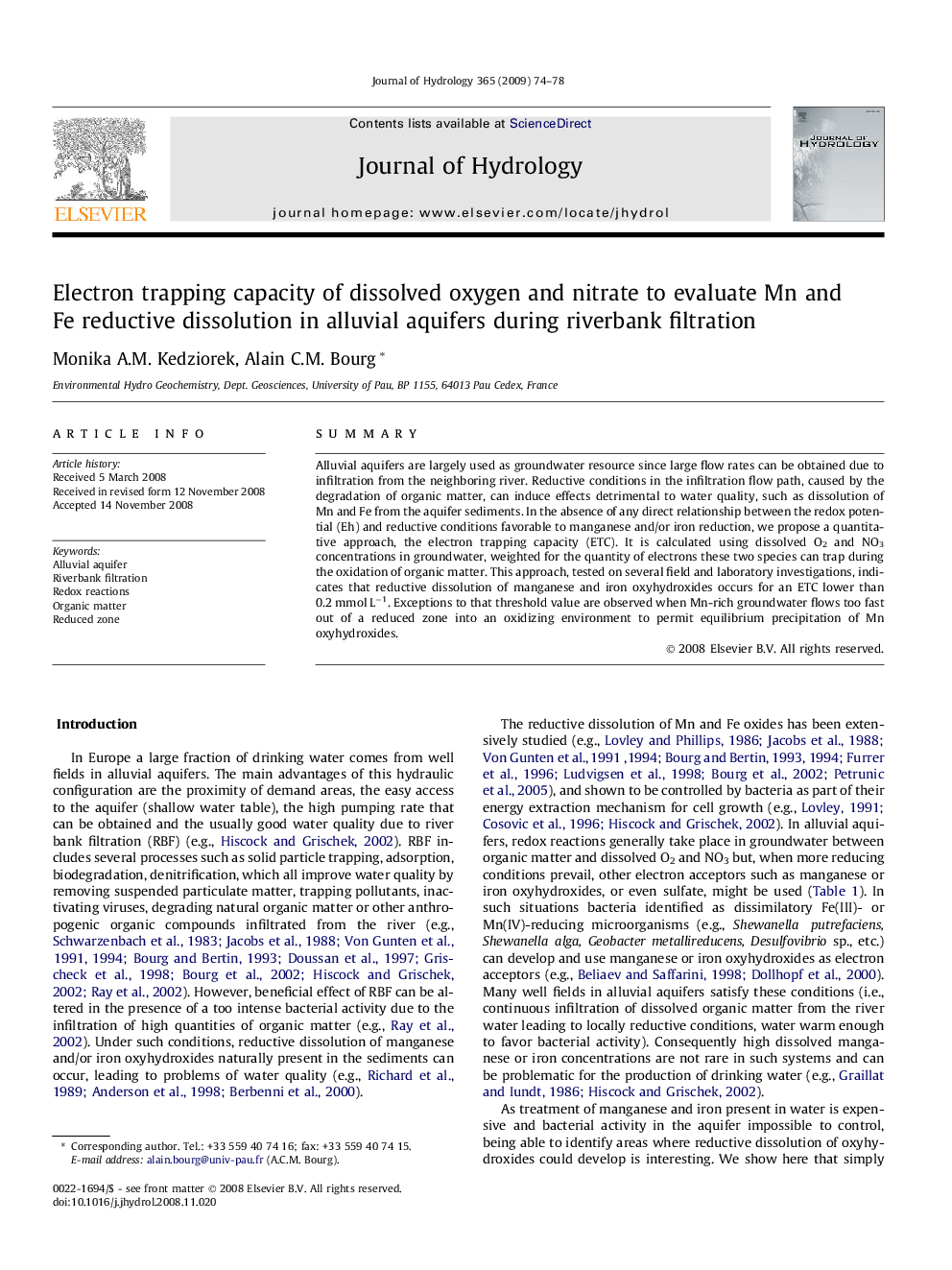| Article ID | Journal | Published Year | Pages | File Type |
|---|---|---|---|---|
| 4579098 | Journal of Hydrology | 2009 | 5 Pages |
SummaryAlluvial aquifers are largely used as groundwater resource since large flow rates can be obtained due to infiltration from the neighboring river. Reductive conditions in the infiltration flow path, caused by the degradation of organic matter, can induce effects detrimental to water quality, such as dissolution of Mn and Fe from the aquifer sediments. In the absence of any direct relationship between the redox potential (Eh) and reductive conditions favorable to manganese and/or iron reduction, we propose a quantitative approach, the electron trapping capacity (ETC). It is calculated using dissolved O2 and NO3 concentrations in groundwater, weighted for the quantity of electrons these two species can trap during the oxidation of organic matter. This approach, tested on several field and laboratory investigations, indicates that reductive dissolution of manganese and iron oxyhydroxides occurs for an ETC lower than 0.2 mmol L−1. Exceptions to that threshold value are observed when Mn-rich groundwater flows too fast out of a reduced zone into an oxidizing environment to permit equilibrium precipitation of Mn oxyhydroxides.
